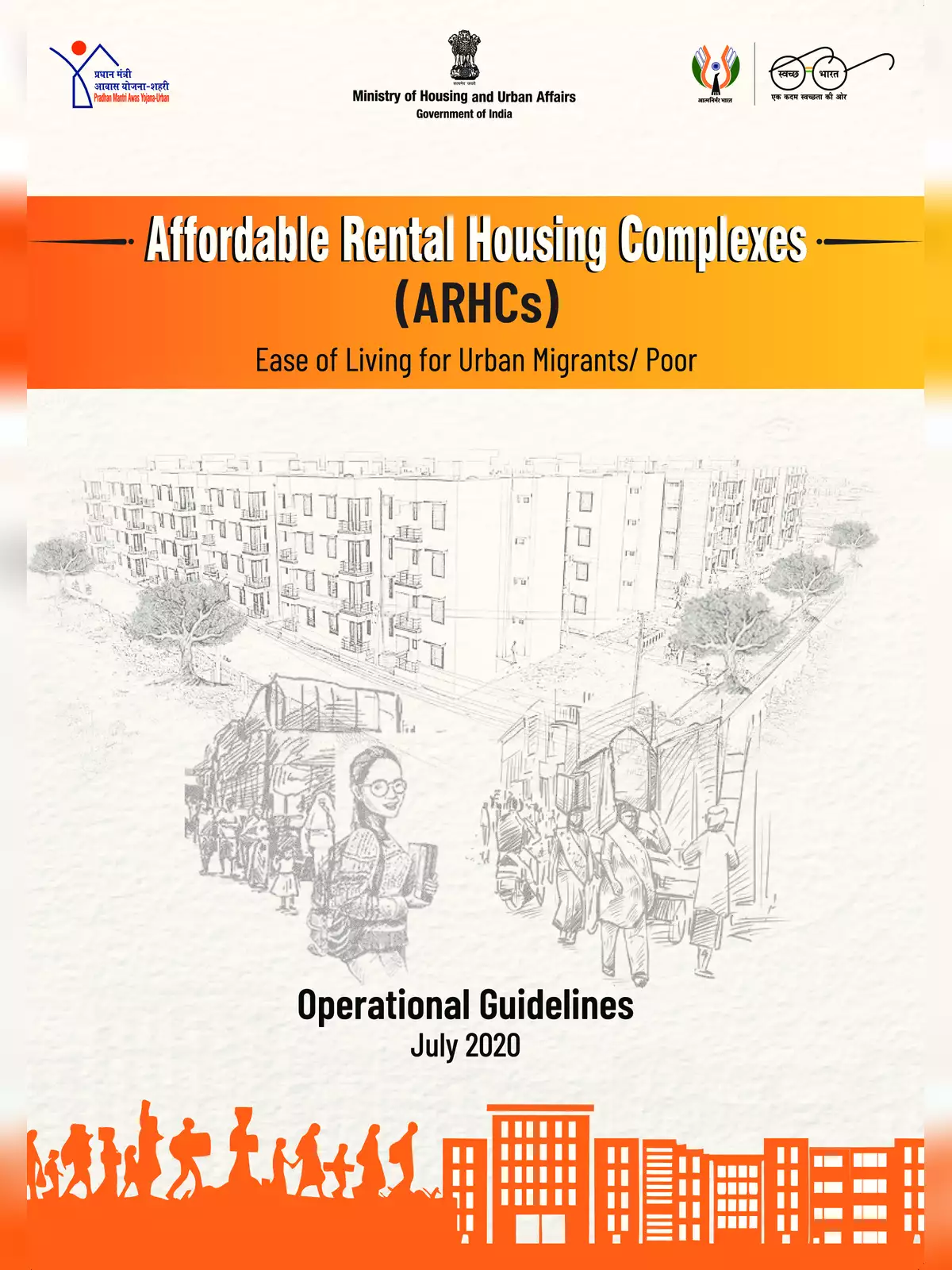ARHC Operational Guidelines - Summary
Affordable Rental Housing Complexes (ARHCs) are vital projects that offer affordable housing solutions with a minimum of 40 Dwelling Units (DUs) and Dormitories. These complexes come equipped with essential civic facilities such as water, sanitation, sewerage, roads, and electricity. Designed primarily for urban migrants and economically weaker sections (EWS) as well as low-income groups (LIG) of society, ARHCs aim to provide safe and secure living environments.
DUs are available in the form of single bedrooms up to 30 sqm and double bedrooms up to 60 sqm, with each unit containing a living area, kitchen, toilet, and bathroom. Additionally, Dormitory Beds can have carpet areas of up to 10 sqm each. The initial rent for these ARHCs will be set by the Local Authority or relevant Entities based on a survey of the area’s market conditions. Notably, these complexes are mandated to operate for a minimum duration of 25 years.
Key Features of ARHC Operational Guidelines
ARHC Operational Guidelines Download
- ARHCs will be established in all Statutory Towns as per Census 2011, including towns notified later, Notified Planning Areas, and regions governed by Development, Special Area Development, or Industrial Development Authorities. States and Union Territories may also classify projects as ARHCs in different regions following the required notifications.
- Projects under the ARHC scheme are eligible for funding until the PMAY (U) Mission period, which concluded in March 2022.
- Approved projects during the Mission can avail an additional 18 months to facilitate fund releases and ensure timely project completion.
- Beneficiaries of ARHCs will consist of individuals from the Urban Poor and EWS/LIG categories, including laborers, street vendors, rickshaw pullers, industrial workers, migrants tied to market/trade groups, educational and health institutions, hospitality sectors, long-term tourists, visitors, students, and others fitting these categories.
- Government-funded homes built under JnNURM and RAY for slum dwellers are owned by the beneficiaries, yet many remain vacant. These homes can be renovated and fitted with necessary civic infrastructure to make them acceptable for rental use by migrants and the underprivileged.
- The Concessionaire will be tasked with the Repair/Retrofit, Development, Operation, and Transfer (RDOT) of ARHCs to Urban Local Bodies after completing their contract period.
For more information, you can download the ARHC Operational Guidelines in PDF format using the link provided below. This valuable PDF is crucial for understanding the framework of ARHCs and their operational strategies. Don’t miss out on the chance to access important information and download it today!
